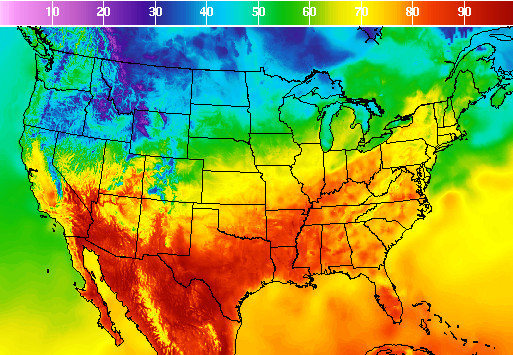Researchers at Penn State University, Pennsylvania, are using artificial intelligence to pinpoint areas susceptible to swift-changing weather conditions, helping meteorologists to produce more accurate forecasts without wasting computational power.
In a study, the researchers used an AI model based on natural selection to find areas of the continental USA where temperature changes are harder to predict and variable, so that computational resources can be focused there, rather than places were the weather is less apt to change. The resulting temperature prediction algorithm was equal to or better than the current model, but used less computational power.
Guido Cervone, professor of geography, meteorology and atmospheric science, Penn State, said, “Our methodology helps focus the available computational resources toward areas that are harder to predict, which in turn should help generate better short-term forecasts. Numerical weather prediction is one of the most computationally demanding problems, and its use for society is far reaching.”
Weiming Hu, a doctoral student in geography, said that the current weather maps are divided up into a simple mesh of about 200,000 grid points in the USA. When weather forecasters use computers to analyze weather patterns in those areas, the computational power is spread equally among those grid points, which each represent about 11km (7 miles) in diameter. They do not take into consideration topography, elevation, the proximity of water, and a myriad of other factors that can disrupt weather patterns, making certain areas much more difficult to predict.
“If you think about Iowa, let’s say, it rarely experiences huge changes in the weather regimes across dozens of kilometers, compared to some other places, because the topography is relatively simple and you can use some very easy interpolation – or estimates – to give you some good ideas about, in this case, what the temperature will be in the future,” said Hu. “But, in the Rocky Mountains, you can go from the plains to the peak of a mountain in just a few kilometers and that changes things dramatically when you’re trying to predict weather regimes. What we want to address is how can we figure out what are the more important or more interesting areas where we need either to have a higher resolution or a more accurate weather prediction for that specific region.”
The researchers, who published their findings in the Journal of Computers & Geosciences, used genetic algorithms to help create a more flexible mesh to focus computational analysis on grids with complex, rapidly changing weather patterns. The mesh in other areas of the country, where the weather is steadier, can be expanded.
“Genetic algorithms do not guarantee the best solution, but they do guarantee finding better solutions faster,” said Hu. “In a case like predicting temperature changes, you might not care about finding the ultimate solution because it might be the difference between 29.56°C degrees and 29.55°C. That’s probably not going to matter for the regular person.”
While the researchers’ study looked specifically at temperature change, Hu said that in the future the model could be tested on other weather conditions, such as precipitation and cloud cover.
To read the original story on Penn State News, click here.



